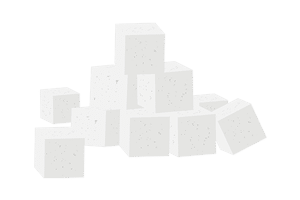Thirsty? Choose Water!
Resources and tips for secondary schools, students and their families to encourage adolescents to choose water over sugary drinks.

What is Thirsty? Choose Water!?
Thirsty? Choose Water! is an initiative to encourage adolescents to choose water over sugary drinks. It supports secondary school teachers and students through curriculum resources, installation of chilled water stations and promotion of water access at school. It also supports parents and carers with ideas and inspiration to encourage water consumption at home.


The ideal way to quench your thirst
Plain water – whether from the tap, fridge or a chilled water station – is the ideal way to quench your thirst because its readily available and is important for healthy bodily function. Choosing water as a drink is important for student health and wellbeing, supporting optimal oral health and concentration in the classroom.
Despite this, sugary drinks are still consumed regularly. Nearly a quarter of New South Wales children aged 12–17 years consume five or more sugary drinks a week – that’s more than any other age group.
By providing educational resources in the classroom, access to chilled water stations in the playground, and information for families at home, we can support adolescents to choose water over sugary drinks.
Why choose water?
As well as being ideal for quenching our thirst, water is important for our bodies and minds. Just check out some of these amazing reasons to go H20!
-
An essential nutrient
Water is an essential nutrient – we need to drink it because our bodies need more of it than they can make!
-
It’s cheap
It’s cheap and conveniently available from the tap.
-
Improves your smile
It keeps your smile looking fiiiiiine. Most Australian tap water contains fluoride, which can help strengthen teeth and prevent tooth decay.
-
Play at your best
It helps you play at your best in sport. Don’t forget your drink bottle when playing!
-
Boost your brain
It gives your brain a boost. Choosing water as a drink and maintaining hydration can help you concentrate. Don’t forget your drink bottle at school!
Sugary drinks – know the facts!

School Promotional Toolkit
Want to spread the Thirsty? Choose Water! message at your school? Download our ready-to-go Promotional Toolkit for schools that has everything you need.
Newsletter snippes
Social media tiles
Posters
Gifs
More resources and information for teachers can be found on our dedicated Thirsty? Choose Water! website.
Choose water resources for families
Our Thirsty? Choose Water! website has resources for parents, carers and students to inspire you and your family to choose water. Read practical tips, try our sugary drink calculator to calculate how much sugary drinks are costing you, play our Aqua Sprint game where you collect water drops and avoid the sugary drinks, or download a Fundraising Pack to raise money for a chilled water station, bottle re-filler or water cooler at your school.
Thirsty? Choose Water! research study
Thirsty? Choose Water! began life as a research study led by Central Coast Local Health District in partnership with four other NSW health districts.
It saw 85 secondary schools test a mix of strategies to promote water as a drink of choice and discourage sugary drinks. These strategies included activities in the classroom, installation of chilled water stations on site and promotions both within the school and to the wider community, including parents and carers.
These combined interventions led to a statistically significant decrease in sugary drink consumption for students. You can read more about the research and its outcomes in the Research section of our Thirsty? Choose Water! website.


Keys to success
- Co-development of ready-to-use resources with schools
- Alignment with stage 4 NSW PDHPE curriculum
- NSW School Infrastructure support of installation
- Quality of chilled water stations
- Coordinated approach between vaccination teams and health promotion
- Local health promotion officer relationships with schools
- Practical application of Health Promoting Schools Framework
Stay up to date
Secondary school teachers
Our Healthy High Schools Network e-updates contain information on our latest resources and professional development opportunities for secondary school teachers.
For further support, secondary schools can contact Chelsea Drew, Health Promotion Officer Secondary Schools and Young People, at Chelsea.Drew@health.nsw.gov.au.
Parents and carers
Our monthly Refresh e-newsletter contains details on our healthy lifestyle resources, programs and information for the Central Coast community.
You can also follow us on Facebook.
Other pages you might be interested in


Latest News


Join Justine and get active on National Ride2Work Day









